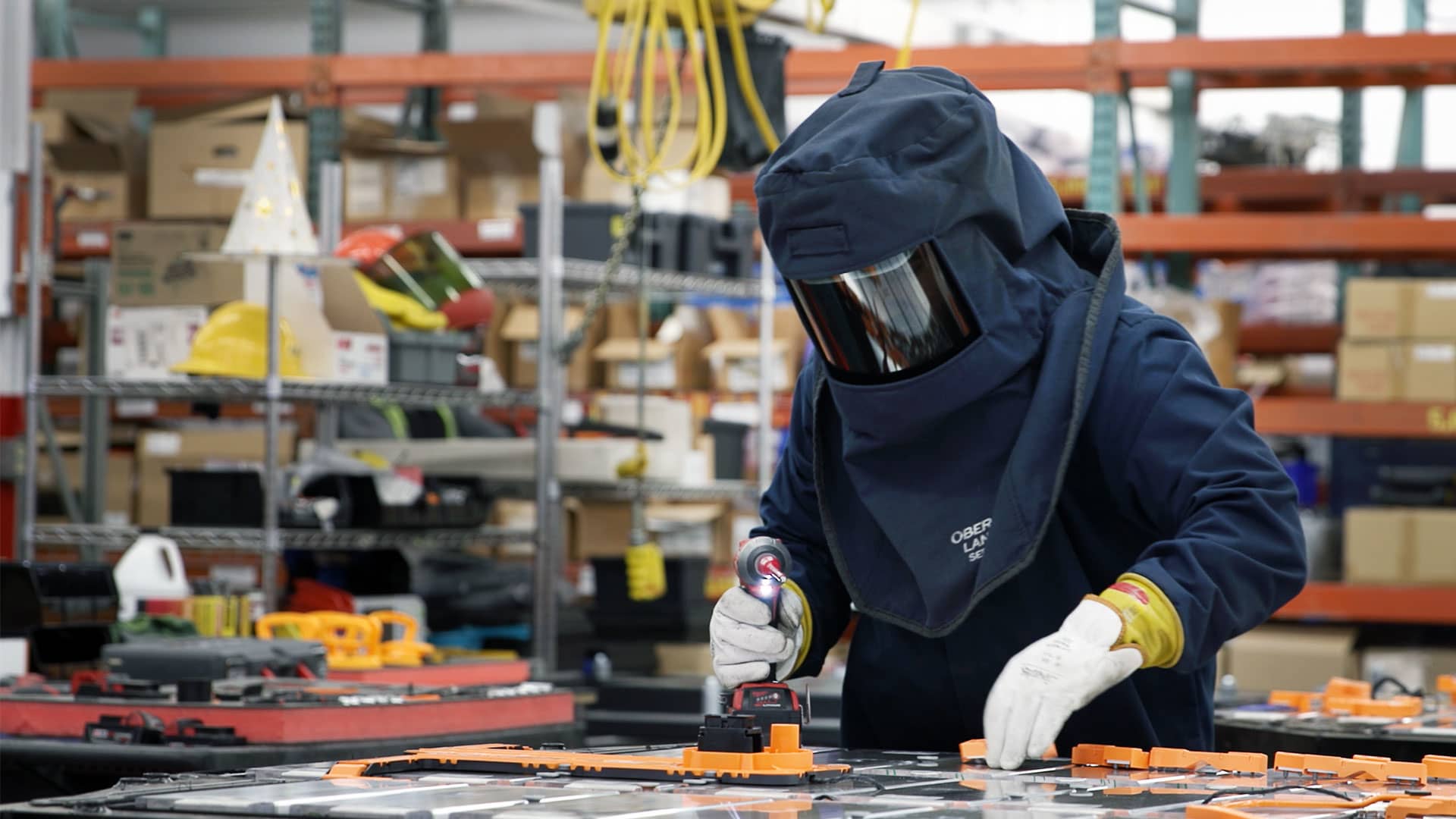
Over 300 million electric vehicles are expected to be on the world’s roads by 2030, according to the International Energy Agency. However, the American EV market is small. In 2021, the U.S. accounted for less than 10% of new global EV registrations, while China and Europe accounted for 50% and 35%, respectively. China also accounts for over 70% of global EV battery production capacity, meaning the U.S. is heavily dependent on imports of batteries and battery minerals.
“It has been clear since 2014 that China had a plan to lock up the bulk of the world’s production of battery minerals,” said John Voelcker, an EV analyst. “The world’s largest battery company is now in China.”
By 2050, the National Renewable Energy Laboratory expects the demand for graphite, lithium and cobalt, all critical minerals in EV batteries, to increase by 500%. It estimates that the lifetime of an EV battery is around 12 to 15 years in moderate climates.
“The degradation of an EV battery pack is one of the biggest questions of the industry,” said Lea Malloy, head of electric vehicle battery solutions at Cox Automotive Mobility. “Every battery will reach the end of life. It’s important that these end-of-life packs are recycled, so they don’t end up where they don’t belong.”
With the estimated reuse lifetime of an EV battery ranging anywhere between five to 30 years, extending the life cycle could reduce the need for mining critical minerals. Companies like American Battery Technology have already developed processes to recycle lithium-ion batteries, but Oklahoma-based Spiers New Technologies or SNT is pioneering a different process.
“It’s fantastic that you can drive an electric vehicle, knowing that the end-of-the life of that battery pack, the ingredients will be reused in a new battery pack and a new electric car, and that we really want to play a role in,” said Dirk Spiers, founder and CEO of SNT.
SNT was founded in 2014 with just two employees. In 2021, it was acquired by Cox Automotive, a subsidiary of Atlanta-based media conglomerate Cox Enterprises. The company now has over 400 employees and offers what it calls a “one-stop solution” for used and faulty EV batteries.
“We are like a diner of battery services,” said Spiers. “You can come to us for a cup of coffee, but if you want to have a steak, a cup of soup or apple pie, we serve all these things.”
The company receives EV batteries directly from the dealership or original equipment manufacturer. It then puts the battery packs through its diagnosis system, named Alfred. Alfred assesses the health of the battery pack to determine whether it can eventually go back into a vehicle. A pack can be repaired to operational conditions, remanufactured to original factory standards, refurbished and upgraded to current factory standards. If truly at its end-of-life, SNT will recycle it.
“A couple of years ago there was a cost associated with recycling a lithium-ion battery pack. Now it is a positive,” he said. “If you give me a lithium-ion battery pack, I probably will give you money back for it. And that’s the beauty of it. The intrinsic value of that battery pack is higher than the cost of recycling.”
In addition to its Oklahoma City-based headquarters, SNT also has facilities in Las Vegas, Detroit and the Netherlands with plans to expand to the east coast and the U.K. Right now it says being centrally located in the U.S. is key to its business model.
“We need to be where our customers are, being bang in the middle of the country helps. We can reach either cost between two and three days,” Spiers said.
The company wouldn’t disclose the number of battery packs it’s capable of storing but said it handles on average 15 thousand battery packs and modules per month.
“We get anything from, say, 50 to 100 battery packs per day. Probably 80, 90% can be refurbished. Recycling is maybe 5 to 10%. And the rest is repurposing, second life. But those numbers will fluctuate,” he said.
Since its inception, SNT says it’s serviced more than 240 thousand packs and more than 50 thousand have been repaired, refurbished or remanufactured.
“If you look at the EV market and take Tesla out, we probably have 60, 65, 70% of that market,” said Spiers. “GM, Ford, Stellantis, Porsche, Volkswagen, Nissan, Toyota, Volvo we keep adding to the list.”
But, why doesn’t it work with Tesla, the most recognizable American EV company?
“They like to do their own stuff. You know, they’re a little bit like Apple,” he said.
“When I think about the future of EV battery recycling specifically, I see it as an increasingly competitive space,” Malloy said. “At the same time, there is a bit of a mismatch of maybe more supply and capacity around EV battery recycling than demand. We’re just riding this first wave of electric vehicles who could be on the road for ten-plus years.”
With the world having a finite amount of minerals necessary for EV batteries, could it reach a point of indefinite cycling and reuse?
“I think we will be mining metals for the balance of my lifetime,” said Voelcker. “The hope is as batteries get more powerful, smaller, lighter and cheaper, with luck, we will need fewer metals.”
“Why would you get cobalt from Africa or lithium from South America, if you can get it here in Oklahoma City,” Spiers said. “The circular economy is happening. It’s happening right now. It’s happening here in Oklahoma City…the volume is still small, but it will get bigger and bigger.”




